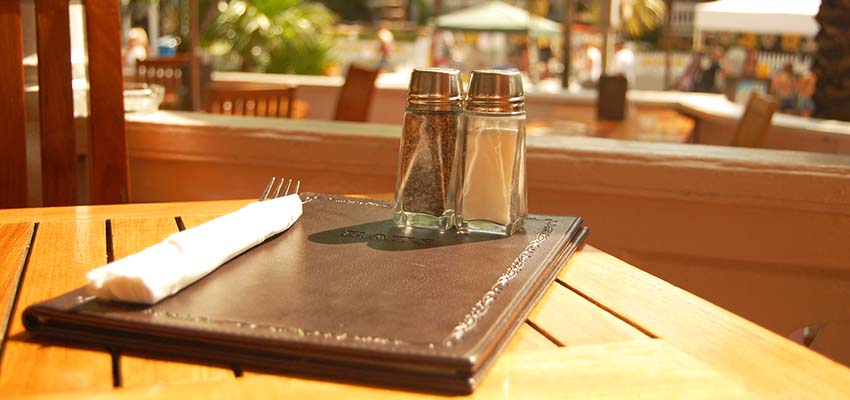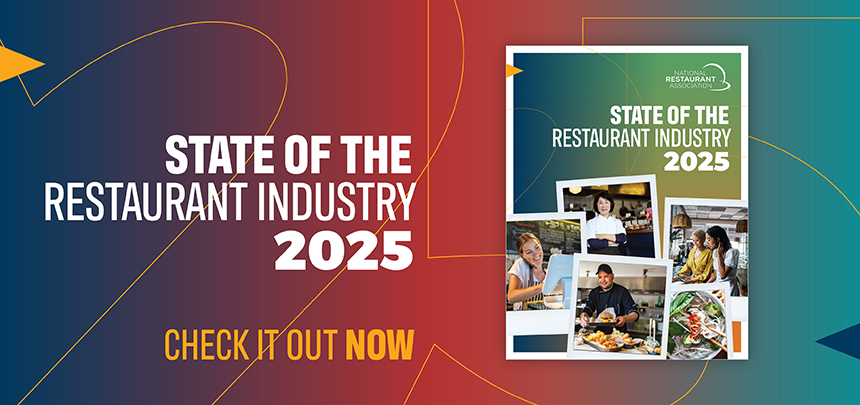Articles
April 03, 2023
10 tips to make outdoor dining pleasant and profitable
As summer approaches, you can increase your sales by creating a positive alfresco dining experience.

As the days grow warmer, people enjoy getting outside more, especially at mealtime. Outdoor dining, in fact, was one way many restaurants survived during the COVID-19 pandemic.
According to the Association’s 2023 State of the Industry Report, anywhere from a quarter to a third of operators in all six major segments say they offered outdoor seating for the first time during the pandemic. Across each of the six major segments, more than 9 in 10 operators that currently have outdoor seating say they plan to continue offering it in the future. And nearly 7 in 10 customers say they like having an outdoor dining option when they eat out.
Using outdoor space for dining expands the number of customers you can serve, appealing to both those still concerned about the safety of dining indoors and those who just like to eat outdoors in pleasant weather.
Here are 10 tips for setting up successful outdoor dining.
1. Get the proper permits. A huge number of municipalities issued temporary permitting processes for outdoor dining areas during the pandemic. Many of those are expiring, and while most cities are making the rules permanent, some have proposed new ordinances that would make it more difficult and expensive to get permits for those spaces when COVID-19-era rules expire.
Required permits may include those for:
2. Plan for all types of weather. As much as customers enjoy dining outside, few look forward to getting drenched in a cloudburst, baked under a hot sun, or chilled on a cold evening.
4. Control pests. Follow the same strategies you use indoors, but be extra vigilant. Don’t forget to:
6. Design an effective layout. Seating arrangements should not only provide comfortable accommodations for guests, visual appeal, and optimal occupancy, but also allow for smooth work flow. Making it as easy for staff to navigate as it is comfortable for patrons will make for a better experience for all.
7. Use technology to help speed service. With servers that much farther away from the kitchen, any ways you can incorporate technology—handheld order entry and transaction devices, tablets or smart phones, QR codes, payment by digital wallet, etc.—will help staff provide better, more expedient service.
8. Set the mood with lighting. String lights are casual, fun and festive; tabletop candles or battery lamps are romantic and intimate; spot lighting can accentuate service areas such as the bar, hostess station, or door to interior restrooms. Customers will need enough light to read the menu.
9. Don’t disturb the neighbors. Being a good neighbor is important to your business. Even if amplified sound systems are permitted, keep the volume down, and keep noise to a minimum with planters and variable surfaces within the space.
10. Keep the outdoors out. With staff and guests constantly going in and out of your restaurant and outdoor dining area, it’s potentially easy for the elements and pests to make their way inside. Consider self-closing door hardware, two-way swing doors, or an air curtain over the door leading to your patio, sidewalk, or rooftop dining to keep the great outdoors where it belongs.
According to the Association’s 2023 State of the Industry Report, anywhere from a quarter to a third of operators in all six major segments say they offered outdoor seating for the first time during the pandemic. Across each of the six major segments, more than 9 in 10 operators that currently have outdoor seating say they plan to continue offering it in the future. And nearly 7 in 10 customers say they like having an outdoor dining option when they eat out.
Using outdoor space for dining expands the number of customers you can serve, appealing to both those still concerned about the safety of dining indoors and those who just like to eat outdoors in pleasant weather.
Here are 10 tips for setting up successful outdoor dining.
1. Get the proper permits. A huge number of municipalities issued temporary permitting processes for outdoor dining areas during the pandemic. Many of those are expiring, and while most cities are making the rules permanent, some have proposed new ordinances that would make it more difficult and expensive to get permits for those spaces when COVID-19-era rules expire.
Required permits may include those for:
- outdoor dining location (private property, sidewalk, street, etc.)
- seating capacity and accessibility
- construction details (setbacks, sightlines, materials, dimensions, access to utilities (electricity for lighting/heating, plumbing, etc.)
- off-premises, or special-use liquor license
- sound systems/noise ordinances
- four-legged friends
2. Plan for all types of weather. As much as customers enjoy dining outside, few look forward to getting drenched in a cloudburst, baked under a hot sun, or chilled on a cold evening.
- Equip your patio with heaters.
- Use umbrellas, awnings, gazebos, sails, or tents to provide shade and rain protection.
- Provide fans, either overhead (where permitted), along a roofline, or on one side to cool guests and maximize airflow.
- Develop an evacuation plan and drill employees in case of dangerous weather conditions
4. Control pests. Follow the same strategies you use indoors, but be extra vigilant. Don’t forget to:
- clean thoroughly
- cover and contain garbage
- store and cover foods properly
- keep landscaping well maintained
- eliminate standing water
- install outdoor fans
- set up bug zappers out of customers’ way
- arrange herbal centerpieces with natural bug repellants (basil, mint, thyme, and rosemary) for tables and planter boxes around the perimeter to keep pests away
- burn citronella candles on tables and torches around the dining area
6. Design an effective layout. Seating arrangements should not only provide comfortable accommodations for guests, visual appeal, and optimal occupancy, but also allow for smooth work flow. Making it as easy for staff to navigate as it is comfortable for patrons will make for a better experience for all.
7. Use technology to help speed service. With servers that much farther away from the kitchen, any ways you can incorporate technology—handheld order entry and transaction devices, tablets or smart phones, QR codes, payment by digital wallet, etc.—will help staff provide better, more expedient service.
8. Set the mood with lighting. String lights are casual, fun and festive; tabletop candles or battery lamps are romantic and intimate; spot lighting can accentuate service areas such as the bar, hostess station, or door to interior restrooms. Customers will need enough light to read the menu.
9. Don’t disturb the neighbors. Being a good neighbor is important to your business. Even if amplified sound systems are permitted, keep the volume down, and keep noise to a minimum with planters and variable surfaces within the space.
10. Keep the outdoors out. With staff and guests constantly going in and out of your restaurant and outdoor dining area, it’s potentially easy for the elements and pests to make their way inside. Consider self-closing door hardware, two-way swing doors, or an air curtain over the door leading to your patio, sidewalk, or rooftop dining to keep the great outdoors where it belongs.
Get the report
Get the report


